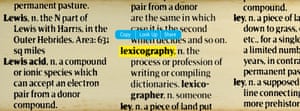via Boing Boing by Mark Frauenfelder
Lime mortar was used for millennia to adhere stone blocks together. It was the primary mortar until Portland cement was introduced in the 19th century. In this video, the Primitive Technology guy made lime mortar from the shells of rainforest snails. It's quite an involved process, and is fascinating to watch. How did people ever come up with making lime mortar in the first place?
The comments are worth reading
==============================
via the Guardian by Mark Brown Arts correspondent

A tattoo discovered on Gebelein Woman, a 5,000-year-old mummy in the British Museum’s collection. Photograph: British Museum
A wild bull, a Barbary sheep and S-shaped motifs discovered on two mummies in the British Museum have been revealed as the world’s earliest known figural tattoos.
Researchers say the discoveries on two naturally mummified bodies that date from between 3351 and 3017BC mean they will have to rewrite the story of tattooing.
Daniel Antoine, the curator of physical anthropology at the British Museum, said: “Incredibly, at over 5,000 years of age, they push back the evidence for tattooing in Africa by a millennium.”
The findings, published in the Journal of Archaeological Science, concern a mummified man and woman from Egypt’s predynastic period, the era before the country’s unification by the first pharaoh in 3100BC.
Continue reading
==============================
via the Big Think blog by Scotty Hendricks
Albert Camus was a Franco-Algerian writer who preferred not to be called a philosopher. He is often associated with the existentialist school of thought, though he preferred to be considered separately from it. His life and way of thinking are rather different from most philosophers and even the existentialists he is grouped in with.
Continue reading
==============================
via Boing Boing by Andrea James
Kazuaki Harada creates lots of charming and funny hand-cranked automata.
More here
==============================
via Interesting Literature
On one of Keats’s less famous poems about unrequited love
‘O love me truly!’ as a poetic refrain is likely to inspire disgust at the poet’s desperation rather than sympathy, but then desperation can be dangerously close to despair, and John Keats (1795-1821) knew better than most what it felt like to experience the pain of hopeless love. In his short and little-known poem ‘You Say You Love’, Keats addresses a woman who doesn’t return his love.
Continue reading
==============================
via the Guardian by Andrew Dickson

Photograph: Guardian Design Team/Christophe Gowans
In February 2009, a Twitter user called @popelizbet issued an apparently historic challenge to someone called Colin: she asked if he could “mansplain” a concept to her. History has not recorded if he did, indeed, proceed to mansplain. But the lexicographer Bernadette Paton, who excavated this exchange last summer, believed it was the first time anyone had used the word in recorded form. “It’s been deleted since, but we caught it,” Paton told me, with quiet satisfaction.
In her office at Oxford University Press, Paton was drafting a brand new entry for the Oxford English Dictionary. Also in her in-tray when I visited were the millennial-tinged usage of “snowflake”, which she had hunted down to a Christian text from 1983 (“You are a snowflake. There are no two of you alike”), and new shadings of the compound “self-made woman”. Around 30,000 such items are on the OED master list; another 7,000 more pile up annually. “Everyone thinks we’re very slow, but it’s actually rather fast,” Paton said. “Though admittedly a colleague did spend a year revising ‘go’”.
Continue reading
==============================
via 3 Quarks Daily: Martin Goodman at the LARB

The destruction of Jerusalem by Roman troops in 70 CE demanded a religious explanation. If God, the supreme ruler of the universe, had allowed such a disaster to be visited on his people, it must be as part of a divine plan. The author of an apocalyptic text that purports to describe the prophetic visions of Ezra, the priest and scribe of the fifth century BCE, but which must in fact have been composed in the last decades of the first century CE, envisaged divine vengeance on the Roman empire.
Continue reading
==============================
via the Big Think blog by Scotty Hendricks
Are we going about being happy all wrong? One Greek philosopher thinks so, and he has advice for you.
What makes you happy? Money, power, friends, booze, overeating, sex, drugs, or perhaps rock-and-roll? Most people worry about how to be happy, yet most people aren’t very good at acting on what they know will make them happy right now.
The problem of what makes us happy and how to act on that knowledge is one of the oldest problems in philosophy and one which has received the most attention. Ideas on how to be happy are some of the most applicable ideas philosophers have ever had.
Continue reading
==============================
via the Guardian by Maev Kennedy

The grave of a 16–18 year-old female and a 17–20 year-old male dating to c.2000-1950 BC. Both are buried with a fineware beaker. Photograph: Dave Webb, Cambridge Archaeological Unit
The largest ever study on ancient DNA has shown that Britain was changed forever by the arrival of the Beaker folk, a wave of migrants about 4,500 years ago who brought with them new customs, new burial practices, and beautiful, distinctive bell-shaped pottery.
The very existence of the Beaker folk – whose ancestry lay in central Europe and further east to the Steppes – and Beaker culture has been questioned in the past. The actual beakers, striking clay drinking vessels with an elegant flared lip, were clearly among the most treasured possessions of the people who were buried with them, and have been excavated from graves across Europe for centuries. However, archaeologists could not agree whether they represented a fashion spread by trade and imitation, or a culture diffused by migration.
Continue reading
==============================
via Interesting Literature
On Barrett Browning’s wonderful dog poem
‘A dog is a man’s best friend’, they say. But one hopes that in this case, as the old jest has it, ‘man embraces woman’, and that what the anonymous author of this proverb had in mind was the close bond between dogs and humans, whether men or women. Flush, the name of the cocker spaniel belonging to Elizabeth Barrett Browning (1806-61), was clearly a close friend of his poet-owner, and Barrett Browning penned this lovely poem about her beloved dog.
Continue reading
No comments:
Post a Comment